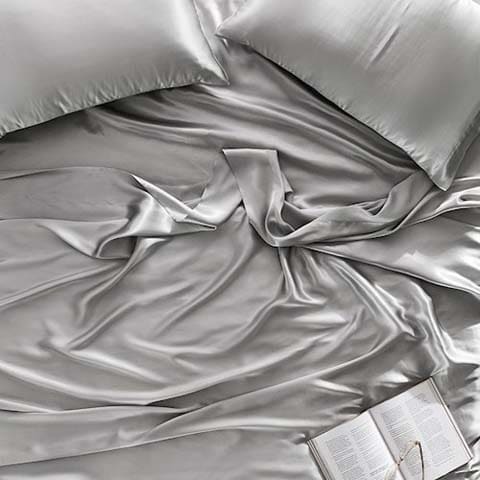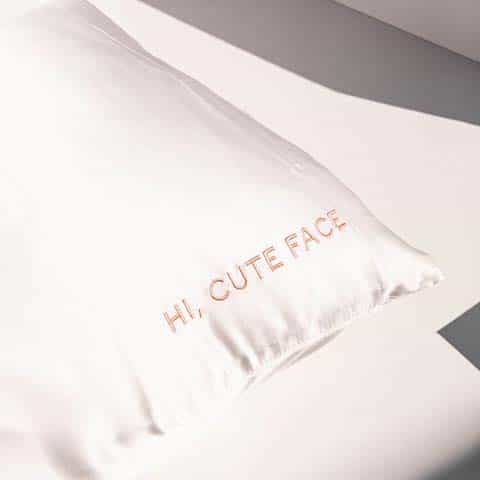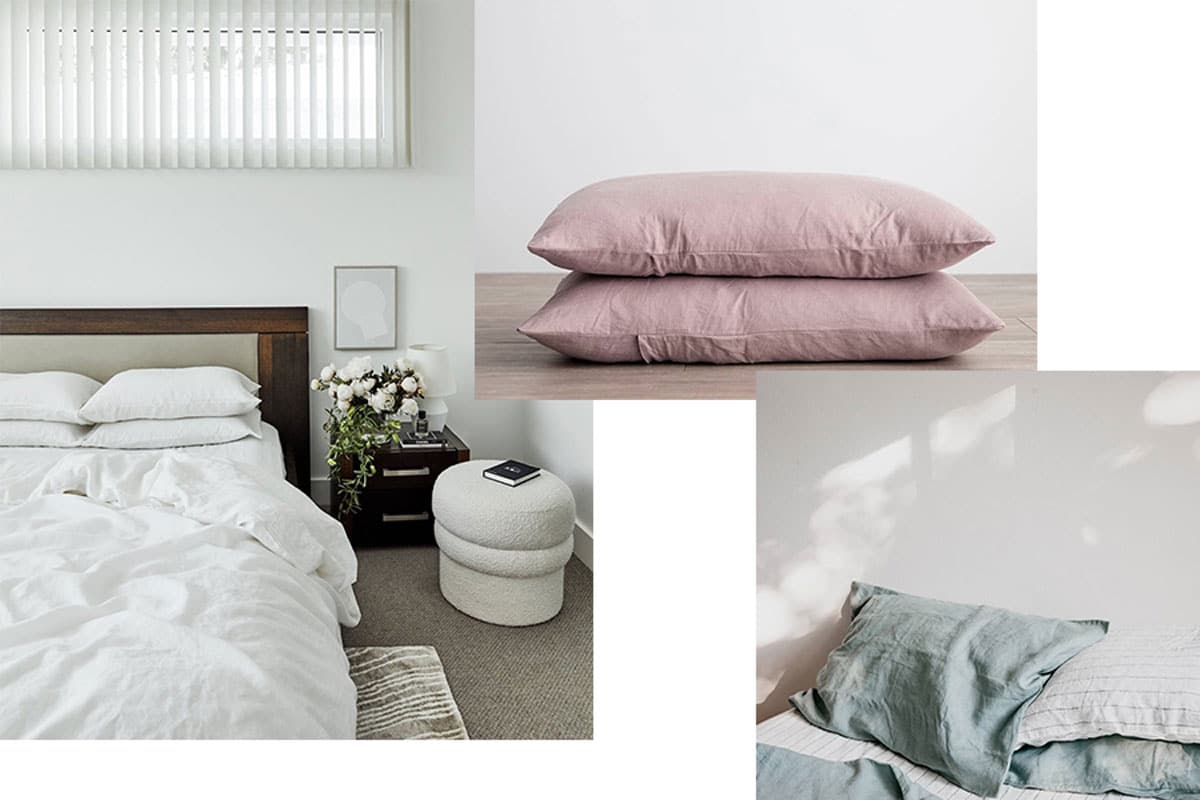
When it comes to selecting the perfect set of sheets, one size certainly does not fit all. The overwhelming choice of fabrics, fibres and thread count can make it especially challenging to decode exactly what you want from your sheets, and which option will give it to you. In an effort to help you navigate the trending debate of cotton, vs linen, vs bamboo, vs silk; we've put together a comprehensive guide to some of the most popular sheets, why they might be right for you, and how they rank on the sustainability scale.
Cotton
What is cotton?
The most commonly used fabric across both homewares and fashion, cotton is a plant that grows as fluffy, white balls – with the 'flower' part of the plant being picked. The fibres are then treated, spun and weaved to form a fabric. A natural and breathable fabric, cotton sheets are known for their smooth and durable feel and can be used throughout all seasons. Due to its high demand and hence, high production, cotton is both a readily available and affordable bedding option.
Why cotton sheets?
Prior to fabrics such as linen and bamboo exploding in the manchester and bed linen market, cotton was highly regarded as the most premium fabric, mainly in part to its natural properties and availability in high thread count. Although there are now several other options to choose from, cotton still remains as the best all-round sheet – as far as comfort, durability and practicality are concerned.
However, picking the perfect cotton sheet is not always a simple task. One significant misconception around cotton sheets is that the higher the thread count, the better. Although we don't recommend choosing a cotton sheet below 300 thread – especially if you're after a set that will last – opting for 1000 thread or even higher is not always the right solution either. If you're unfamiliar with thread count, the higher the count, the more thread is packed within a single weave. While this certainly makes for an extremely durable sheet, it also makes for a very warm and heavy one; which is not ideal for hot sleepers.
There are also several types of cotton available to choose from, with some treatments more comfortable than others. For ultimate luxury and unparalleled quality, Supima cotton is one of the best choices. Although it isn't as well known as Egyptian cotton, Supima is unique to other forms of cotton due to its extra-long staple fibre, making it twice as strong as regular cotton as well as increased softness and colour retention.
Is cotton sustainable?
Cotton has long been criticised for its environmental impact. Cotton is a crop that requires a lot of water to farm and produce, and in drought ridden countries such as Australia, this can have a significant environmental burden especially when water is in short supply. As documented by WWF, it takes 20,000 litres of water to produce one kilogram of cotton, which is equivalent to a single t-shirt and a pair of jeans.
Cotton vs Egyptian cotton
The main defining factor between cotton and Egyptian cotton is their origin. The two cottons come from different plants, with the fibres from Egyptian cotton plants being longer and silkier, creating a more luxurious bedding experience. Egyptian cotton sheets – which are a sateen cotton rather than percale – are also characterised by their weave, which is more tightly woven and therefore creates a softer and finer finish.
Not all cotton grown in Egypt is Egyptian cotton, as the term refers to the particular plant that grows on the river nile. When purchasing certified Egyptian cotton in Australia, keep an eye out for the IP Australia Egyptian cotton trademark symbol.
Linen House Lifestyle Hotel Augusta 500THC Cotton Sateen Sheet Range
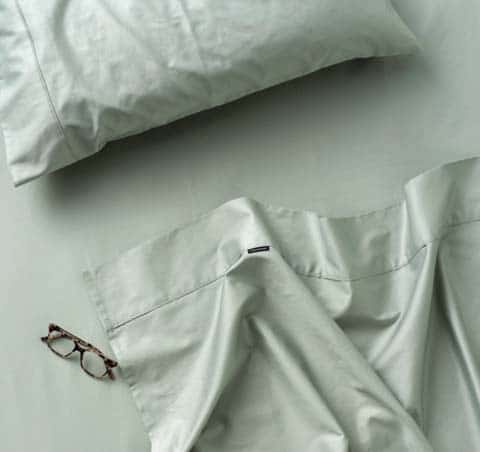
Private Collection Supima 1000THC Cotton Mega Sheet Set Range
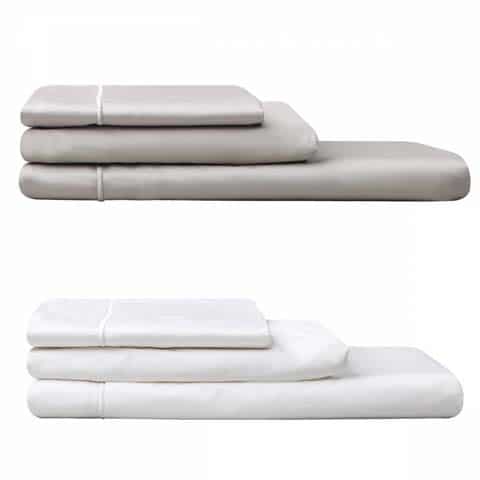
Sheridan 600THC Cotton Egyptian Blend Sheet Set
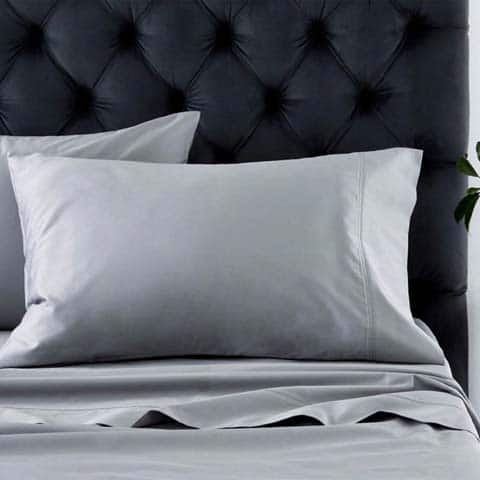
Linen
What is linen?
Linen is another natural textile made from the fibres of the flax plant, which is the same plant we get flax seeds and linseeds from. The production of linen sheets is a much more intensive process than producing cotton sheets; as the flax thread weaving process is more difficult and time consuming than the cotton-weaving process. The main drawcard towards linen is its breathability, which creates a sheet that keeps you cool in summer and harnesses warmth in winter.
Although the texture of linen sheets can be polarising, the trick to finding a smoother alternative is shopping laundered linen, rather than a product that hasn't been pre-washed. By pre-washing linen sheets, it removes the original starchiness of the sheet that many people have been opposed to.
Why linen sheets?
In addition to their breathability, linen sheets are naturally hypoallergenic, providing a great solution for people who suffer from allergies or sensitive skin. Another benefit of this natural product is that it regulates body temperature, meaning that depending on whether you're feeling hot or cold, linen will work with your body to keep you feeling comfortable while you sleep.
From a trend perspective, linen's crinkly, rustic and relaxed appearance is a frontrunner as far as interiors go. Rather than the crisp and formal finish that cotton offers, people are definitely leaning more towards the calming aesthetic of linen.
Is linen sustainable?
Organic linen is certainly much more sustainable than cotton sheeting. Because linen originates from the flax plant, it requires less water and fewer pesticides to cultivate, and there is quite minimal waste associated with using flax, as other parts of the plant can be repurposed to produce other items. It also has significant longevity in comparison to other materials, arguably getting better with every use rather than deteriorating in quality.
Linen vs cotton
As mentioned above, although cotton is still quite breathable, as a porous fibre, linen definitely wins out. Unlike cotton that has a tendency to warm up with the body and stay that way, linen is known for its moisture-wicking properties and is also much stronger than cotton. In terms of maintenance, linen is extremely low maintenance, drying faster than cotton and requiring no ironing.
MM Linen Laundered Linen Sheet Set Range
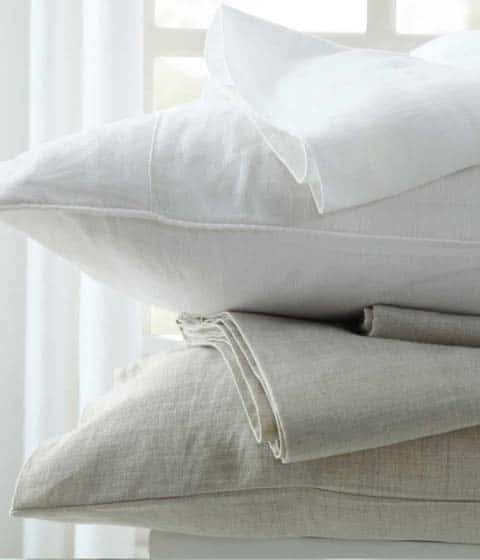
Bed Threads 100% Flax Linen Sheet Set
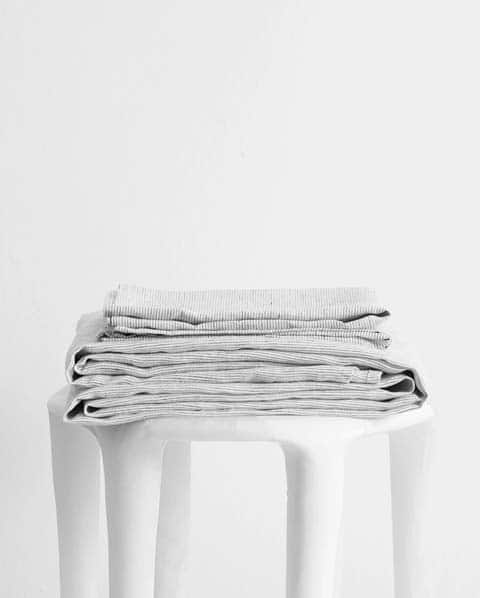
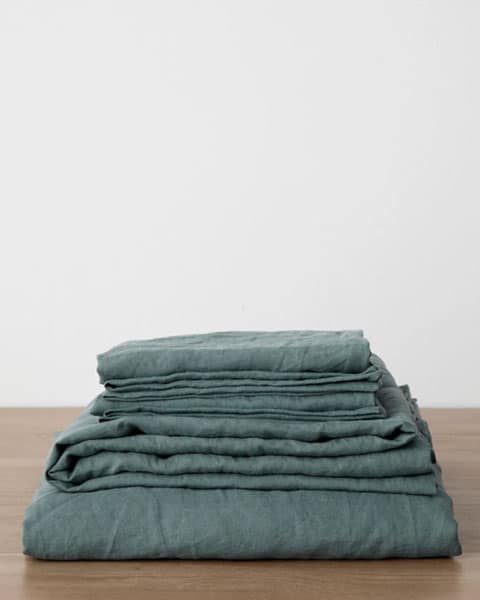
Bamboo
What is bamboo?
Bamboo originates from the bamboo plant in Asia, however, in its material form, bamboo sheets have four distinct subsets, which are determined by the process and the fabric in which they are made. Bamboo is typically made into rayon, viscose or lyocell, which are man-made natural fibres. This does not mean that the product isn't natural, it just means that it must be processed into a weavable fibre before it can be used.
There has definitely been a rising interest in bamboo sheets in recent years due to their breathability, silky-smooth touch and comfort, moisture-absorbing properties and sustainable practice. If you aren't sold on the overly-silky touch of bamboo, opt for a bamboo-cotton blend sheet, that will still deliver on breathability, but brings a touch of crispness to your sheet.
Why bamboo sheets?
Bamboo is widely regarded as one of, if not the softest and most comfortable sheeting option – even above cotton or linen. Their luscious touch is due in part to the bamboo fibres and the finely woven threads that are formed. Unsurprisingly, bamboo is also extremely breathable, as well being naturally hypoallergenic and anti-bacterial. Because bamboo sheets don't hold excess moisture, they discourage one of the primary triggers of allergies, dust mites, from taking up residency in your bed.
Is bamboo sustainable?
Bamboo has been hailed as one of the most sustainable bedding materials due to its low carbon footprint. Not only does bamboo require less water to grow and produce than other materials, but due to its fast-growing properties, manufacturing bamboo sheets poses no substantial threat to the environment as their sources are easily renewable. The water used in the production of bamboo sheets can also be recycled.
Bamboo vs cotton
As mentioned before, bamboo sheets are much more sustainable that traditional cotton sheets. In addition, unlike cotton, bamboo is naturally anti-bacterial, which means it stops bacteria growing, and is also hypo-allergenic. Bamboo sheets also trump cotton in the breathability space, as they are naturally lightweight rather than their coolness being determined by thread count or the quality of the cotton.
View this post on Instagram
Linen House Lifestyle Nara 400THC Bamboo Cotton Mega Sheet Set Range
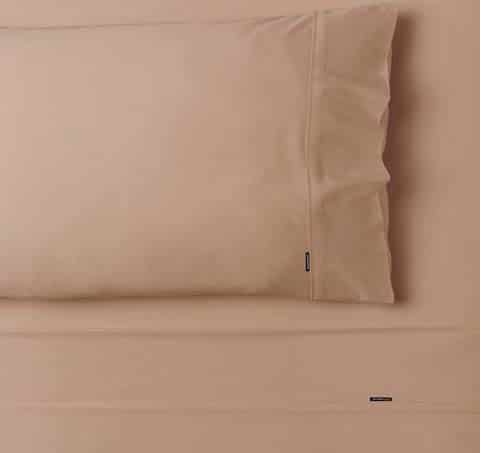
Ettitude Bamboo Lyocell Sheet Set

Silk
What is silk?
Silk is a natural fibre that is spun from silkworms. It is an extremely premium material due to how difficult it is to produce and its exclusivity. Silk bedding is produced in two different forms – seamless and sealed. Silk is also extremely hypoallergenic and can protect against dust mites, deterioration and is known for wicking away moisture-causing bacteria. Its soft, luxurious and expensive feel is what has drawn lovers of the fabric back time and time again.
Why silk sheets?
Although silk sheets are not the obvious choice when you think of bedding, there have been several misconceptions that have deterred consumers from giving them a try. Many of these have stemmed from people's experiences with silk 'satin', which is not actually 100% silk and rather polyester. It is true that silk sheets do require some extra care, however, when treated well, silk is an extremely strong fabric for its weight. Silk is extremely lightweight and soft, guaranteeing a comfortable nights sleep, and is much kinder on sensitive skin, eczema-prone skin and dry skin than more coarse materials.
Silk sheets are certainly on the more expensive side, but due to their complexion benefits, more people have been incorporating silk in the form of pillowcases and eye masks rather than in full sets.
Is silk sustainable?
Despite its alluring qualities, silk is not a vegan-friendly material, as it uses the threads from silk worms. However, because of this, silk production does not require pesticides or herbicides often found in some textiles.
Silk vs cotton
Although we are led to believe that cotton is far stronger and more durable than silk, it is in fact the opposite. 100% Mulberry silk sheets also have cotton beat in terms of breathability and moisture-wicking properties. Silk's soft, silky texture is unparalleled, and is arguably the most comfortable bedding material. However, cotton is far more affordable and low maintenance than silk in terms of washing and drying, as well ethical considerations.
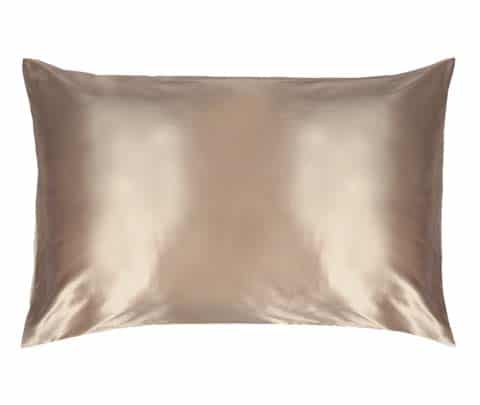
Home Republic Pure Silk Silver Sheet Set
